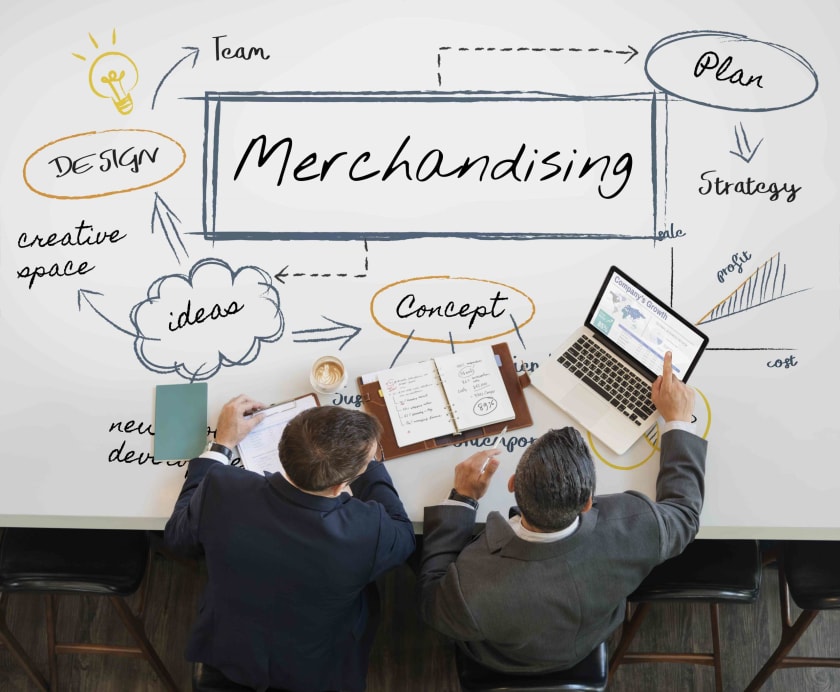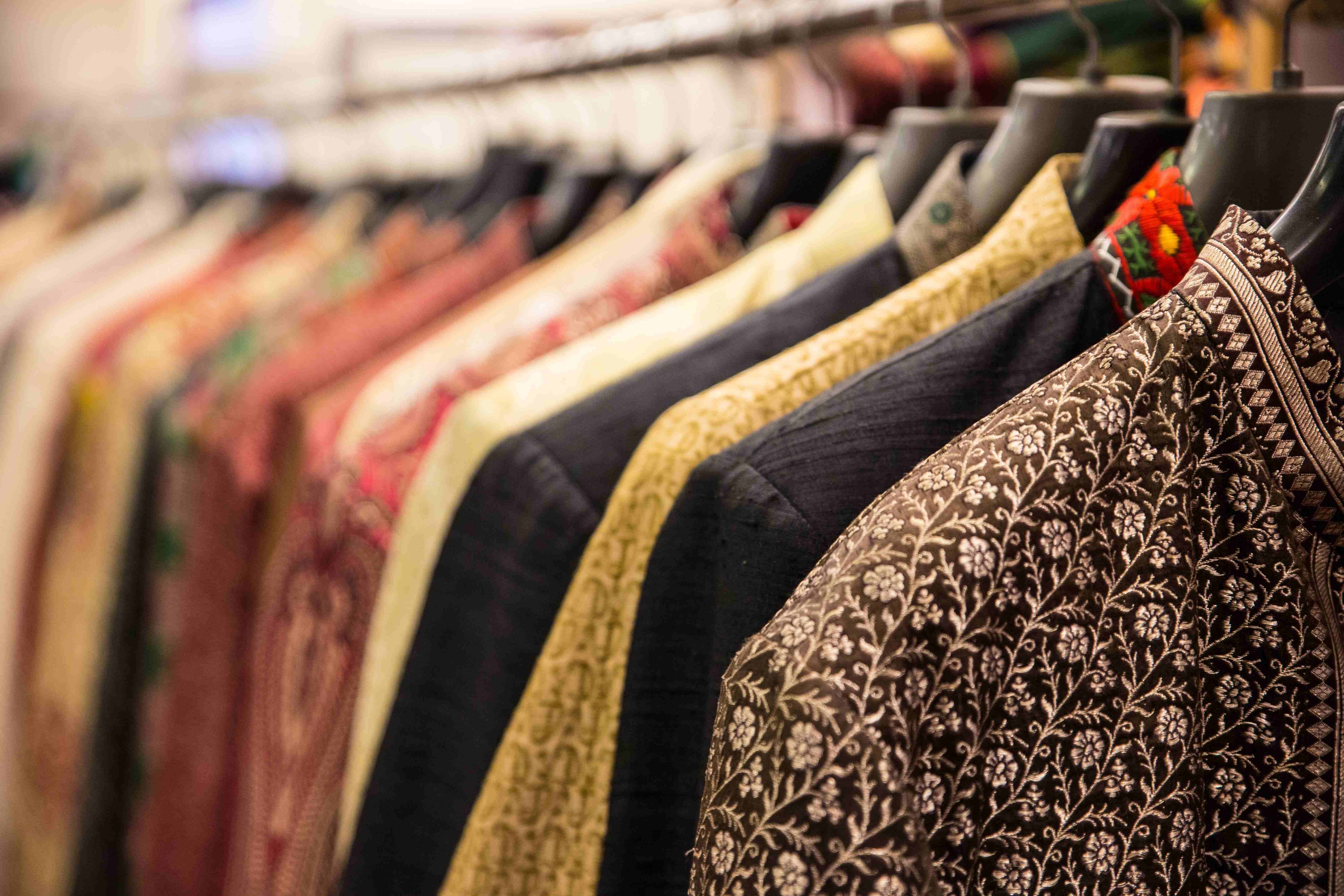Product Merchandising: How to Successfully Promote and Sell Your Products in Store?



Product merchandising is the process of displaying, advertising, and selling your clothing products in retail stores.
It involves activities like visual merchandising and discounting, and the goal is to:
- Get more sales in-store
- Provide a memorable shopping experience to customers
One of the key aspects of product merchandising is visual merchandising. It involves planning, designing, and displaying products to emphasize their benefits and features.
The layouts, lighting, positioning, and color are all crucial in the process of promoting and selling your clothing product in a store.
For a clothing brand, it is challenging to keep an eye on the promotion and sales of its products. If the sales are lesser than expected, it’s time to develop effective strategies and tactics that can increase the visibility of their clothing products.
With the advent of e-commerce, consumers are moving in that direction faster than we previously thought possible.
However, this does not mean that brick-and-mortar stores will no longer have a place in the market. On the contrary, retail stores will be important for brands since they offer opportunities to engage customers personally, which cannot be achieved online.
Here are some tips on how to successfully promote and sell your products in-store:
1. Know your customer
Understanding your customer's needs is the first step in successfully marketing a product. What qualities do they look for in a clothing item? Where do your customers usually shop, and how often do they shop there? Which clothing brands do they prefer?
These are only a few of the questions that a clothing manufacturer must address.
It is critical to comprehend the customer's problems and purchasing habits.
Knowing their preferences and purchasing habits is critical for any clothing manufacturer.
2. Select the right store
Selecting the right retail store for a product is a challenging task. It involves various factors to be kept in mind before making a decision.
That said, here are some key metrics that are going to help manufacturers select the correct retail store:
- Buyer's information
- Purchase cycles
- Product preference
- Pricing strategies
- Competitor analysis
As a manufacturer, you should be able to use this data to create a unique and unforgettable customer experience.
3. Use in-store marketing strategies
After identifying the correct retail store, one may want to implement a strategy for capturing the customer’s attention. There are many ways to do this. In the end, you need to ensure that the clothing products are displayed at the front of the store.
People are drawn to visible items, and this will help to bring them into the store.

Alternatively, one could have their products placed on a display table in the middle of the store as well.
4. Come up with a clever product name and description
To make your clothing brand stand out from the rest, one has to come up with a clever product name and description.
Having a clever product name will help to differentiate their garments and products from others, ensuring greater brand visibility.
On the other hand, you must also focus on creating a unique product description across marketing materials, so that customers engage with & buy your product.
5. Create a sales pitch
A sales pitch is an appeal made to retailers to persuade them to buy products. However, a sales pitch may differ according to the retail store you are approaching. The best course of action for a smaller clothing brand may be to personally meet with the store owner. Whereas, for a big clothing brand, one can schedule a meeting via email or a phone call.
It might take a lot of patience, effort, and determination to connect with the correct retailers and grow your clothing brand so that customers would love it.
6. Have a cohesive marketing strategy
Having a cohesive marketing strategy will ensure that the efforts one has put into promoting their clothing brand are not going to waste. After identifying the different channels through which a product can be sold, one should create a marketing calendar. A marketing calendar is essentially a schedule that outlines marketing activities for the clothing brand for each month. After creating the marketing calendar, one should ensure that they are consistently meeting the goals that have been outlined.
7. Register for trade shows
Going to trade shows requires investment but can attract a lot of retailers and store owners. As a clothing brand, one should not miss the chance. You must register for relevant trade shows as it can be a game changer for your business.
Retailers often visit these trade shows in search of new clothing lines.
However, there is a substantial time and cost commitment, so one should choose trade shows carefully.
Benefits of Getting Products in Stores
Business owners can boost their business by adopting product merchandising and selling their products through retail stores. A majority of business owners stock their goods in retail stores for ease. Here are some key benefits of getting products in a retail store:
1. Increased sales

A proven way to increase sales of a business is by selling its products through stores. Retail store owners have direct contact with several clients and have experience in marketing.
This, in turn, helps to increase the sales of an apparel business.
2. Wide reach
Retail stores help widen the reach of one's business by allowing business owners to sell their products to a larger demographic, depending upon the store's location. This is independent of the product manufacturer's location.
One can penetrate newer markets without the overheads related to hiring employees or opening a store themselves.
3. Business growth
The wide reach of a product builds brand awareness. People tend to pay higher prices for a brand which increases the profit and revenue.
This process ultimately results in the growth of the business.
4. Lower cost
Having products available at various retail stores helps business owners keep operating expenses to a minimum. It saves them the marketing and shipping expenses.
5. Convenience
Business owners can benefit greatly from retail stores. When compared to dealing with numerous clients directly, managing one client i.e., the retail store, is comparatively easier.
Conclusion
The e-commerce revolution is not slowing down anytime soon. That being said, it doesn’t mean brick-and-mortar stores will be replaced in the future.
As a clothing manufacturer, one needs to ensure that their products are easily visible to their target customers.
This can be achieved through effective product merchandising.

Fashinza helps business owners to achieve the desired revenue by managing their sales and giving desired support from production to delivery.
It also provides 24-hour product tracking and data-driven controls. This ultimately helps to reduce the cost and save time.
If you're a clothing manufacturer or supplier looking to grow your business to the next level, sign up at Fashinza now!



















